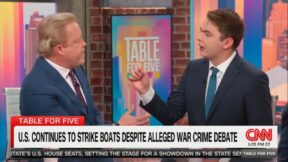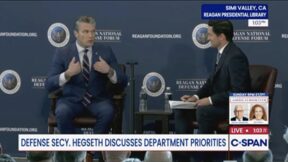Rules For The Radical Right? An Interview With Alinsky’s Biographer
M: I listened to your NPR interview in January, and you mentioned that one of Obama’s key Alinskyite tactics was his grassroots organization in the primary states. Just looking back on his first few months in office, would you say there’s any continuation of Alinskyite thinking and methodology as to what Obama’s trying to do?
I think it’s a work in progress … [Organize for America] is trying to figure out how to mobilize people and keep people involved and energized and I don’t think they have yet figured out how to do that. And in some states, I think, Wisconsin is one I know a little about, that they have been trying to turn people out about the healthcare issue in particular, so with some success they have had some good turnouts in a couple of cities in Wisconsin. And this is really uncharted territory. We’ve never really had a community organizer in chief, so to speak, in the White House, who really fully understands and appreciates what community organizing and some modifications of it are about.
M: A lot of people, especially on the right, are uncomfortable with this “community organizer-in chief” concept, with a president having this sort of reach at the ground level. What do you think changes when you move someone from an outsider’s position to an insider’s position who still wants to keep these methods intact?
All presidents have tried to find ways to move their agenda forward. It’s usually done in very conventional ways — if you remember, George W. Bush tried to sell the country on what the liberals would call privatizing Social Security. He went around and did a number of events in different, strategically important cities and states and tried to get Republican groups to weigh in and support him. The President trying to mobilize support for a particular issue is still very traditional…
…But Obama’s doing something new. It’s one thing to try to tap into the existing local Chamber of Commerce, or whatever the affiliates are for the National Association of Manufacturers, where they have a variety of issues and different views and so forth. It’s another thing to build an organization in a number of states, if not in every state, that really is there to try to lend popular support to an issue such as healthcare.
You know, that has not really ever been seen, at least not in recent history. And that becomes a very interesting conversation all by itself about what reaction other office holders are going to have when sort of some pressure is applied to them through the President’s organization and to do it in a rather public way.
M: That about wraps up my questions; anything else you’d like to add?
Even though in some of his rules, Alinsky used the phrase, doing something in relation to the “enemy,” I think what really separates Alinsky in practice, how he really operates, from at least a piece of right wing is that in his own mind he was very clear that in this sort of system we have in this country that there are no permanent allies and no permanent opponents. There are always shifting interests, and a good organizer knows that today’s opponent could very possibly be tomorrow’s ally. And so there’s really a lot more “opponent” as opposed to “enemy.”
What’s really troubling about part of the political right is that I don’t sense that distinction. I sense this really deep anger that’s so deep and powerful that people who are in their view on the other side really are enemies and not merely opponents who may later agree on other important things.
Helen Zhang helped transcribe this interview.




